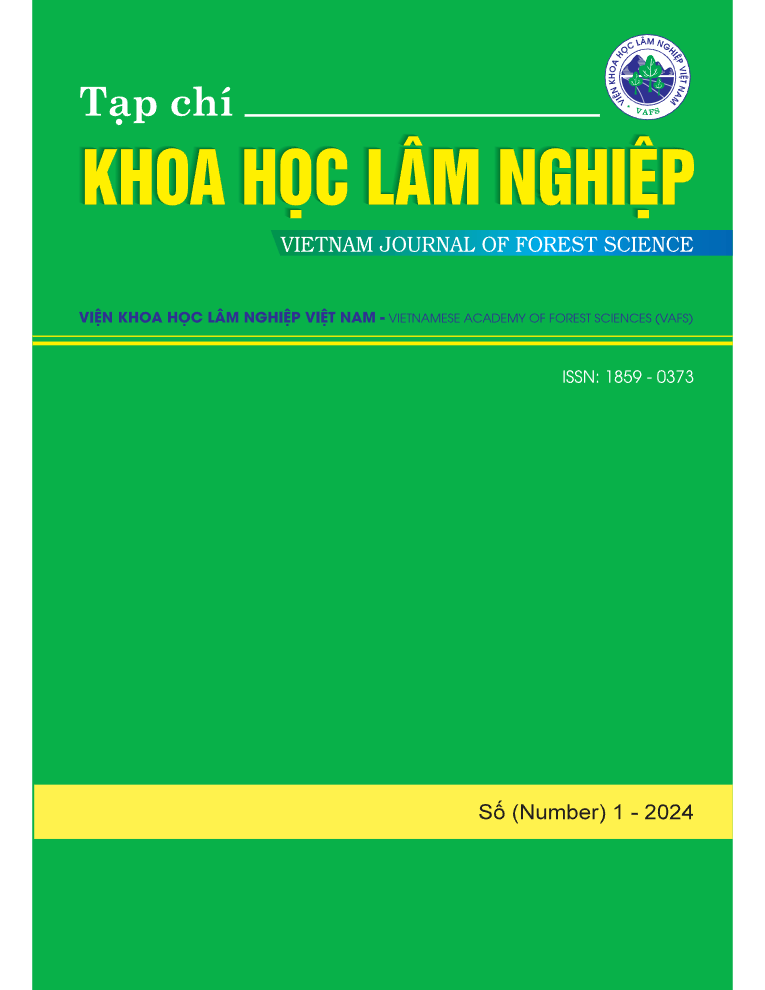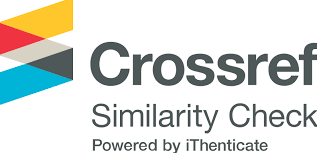RESEARCH ON SELECTION OF SELECTING PLUS TREE OF Cinnamomum cassia IN BAC KAN PROVINCES
Keywords:
Cinnamomum cassia, plus trees selection, essential oil content, Bac Kan provicesAbstract
Cinnamon (Cinnamomum cassia Presl.) is a high-value species that brings significant economic benefits to the communities in some districts in Bac Kan province. However, there is currently no selected and certified Cinnamon variety and there is no report on the productivity, quality, and essential oil content in the bark compared to other cinnamon-growing regions. Therefore, it is crucial in selection of plus trees with high bark productivity and essential oil content. The results of plus trees selection in Cho Don, Cho Moi, and Bac Kan City have identified 123 trees aged between 11 and 30 years. These trees showed superior growth compared to trees in the surrounding population, with a diameter at breast height exceeding 25.3 - 114.1%, 9.8 - 22.4% in height and 50.5 - 296.7% in bark productivity. The selected trees have straight trunks, smooth bark, large canopy, thick branches, and have already produced flowers and fruits. The content and quality of the essential oil in the bark and branches of the selected trees in Bac Kan are equivalent to those in the cinnamon varieties that are currently exploited in Yen Bai and Lao Cai provinces. The essential oil content ranges from 2.5% to 6.5% compared to 2.5% to 4.2% in Yen Bai - Lao Cai's varieties. The specific gravity, and refractive index of the essential oil ranges from 1.037 to 1.044 and 1.594 to 1.605, respectively which is higher than those in Yen Bai - Lao Cai's varieties. The optical rotation of the essential oil in Bac Kan plus trees ranges from -0.96 to -0.48, higher than in Yen Bai - Lao Cai's varieties which range from -0.97 to 0.00. The content of trans-cinnamaldehyde is from 83.95% to 92.10% compared to 88.84% to 91.35% in Yen Bai - Lao Cai's varieties. The content of coumarin in the essential oil ranges from 0.65% to 1.58%, which is lower than the maximum limit of 4% regulated by TCVN 6029:2008.
References
Bộ Y Tế, 2017. Dược điển Việt Nam. NXB Y học, Hà Nội. Tr. 1296-1297.
Hiệp hội Hồ tiêu và cây gia vị Việt Nam, 2023. Sổ tay Hồ tiêu và Gia vị Việt Nam.
Phạm Xuân Hoàn, 2001. Nghiên cứu sinh trưởng và sản lượng làm cơ sở đề xuất một số biện pháp kỹ thuật trong kinh doanh rừng Quế (C. cassia Blume) tại tỉnh Yên Bái. Luận án tiến sỹ Nông nghiệp, Trường Đại học Lâm nghiệp Việt Nam.
Tạ Minh Quang, Nguyễn Huy Sơn, Phan Văn Thắng, Hà Văn Năm, 2018. Kết quả chọn cây trội Quế tại huyện Bắc Trà My, tỉnh Quảng Nam. Tạp chí Nông nghiệp và PTNT, chuyên đề Giống và lâm sản ngoài gỗ, tháng 11/2018.
Nguyễn Hải Tuất, 2006: Phân tích thống kê trong lâm nghiệp. NXB Nông nghiệp, Hà Nội.
Phạm Văn Tuấn, Nguyễn Huy Sơn, 2007. Cây Quế và kỹ thuật trồng. NXB Nông nghiệp, Hà Nội, 143 trang.
Nguyễn Hữu Trà, Lê Sỹ Trung, Dương Văn Thảo, 2019. Nghiên cứu chọn cây trội giống Quế lá nhỏ (Cinnamomum cassia Blume) có sản lượng vỏ và hàm lượng tinh dầu cao phục vụ sản xuất giống trên địa bàn huyện Văn Yên, tỉnh Yên Bái. Tạp chí Khoa học & Công nghệ ĐHTN 207(14): 153 - 160.
Phan Văn Thắng, Tạ Minh Quang, Nguyễn Huy Sơn, Hà Văn Năm, Trịnh Bích Hảo, 2020. Kết quả chọn cây trội Quế tại Yên Bái và Lào Cai, Tạp chí Khoa học Lâm nghiệp, số 4, Viện Khoa học Lâm nghiệp Việt Nam. Tr 14-29.









